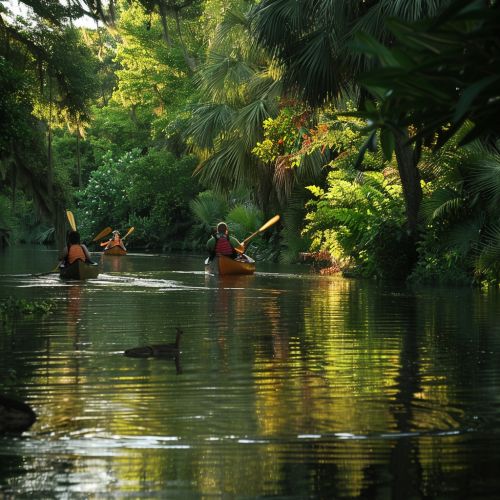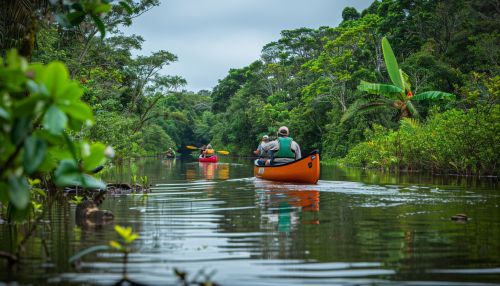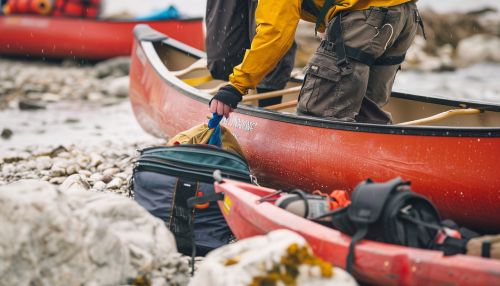Canoeing safaris
Overview
Canoeing safaris are a unique form of adventure tourism that combine the thrill of canoeing with the excitement of wildlife viewing. These safaris are typically conducted in regions with large bodies of water and abundant wildlife, such as the rivers and lakes of Africa, the Amazon Rainforest, and the Everglades in the United States.


History
The concept of canoeing safaris can be traced back to the indigenous tribes of North America and Africa, who used canoes as a primary mode of transportation and for hunting. The modern form of canoeing safaris, as a recreational activity, began to gain popularity in the late 20th century with the rise of adventure tourism.
Types of Canoeing Safaris
There are several types of canoeing safaris, each offering a unique experience. These include:
- Guided Canoeing Safaris: These are led by experienced guides who navigate the waterways and provide information about the local flora and fauna.
- Self-guided Canoeing Safaris: These allow participants to navigate the waterways on their own, using maps and other navigational tools.
- Photographic Canoeing Safaris: These are designed for photography enthusiasts and provide opportunities to capture stunning images of wildlife and landscapes.
- Fishing Canoeing Safaris: These are aimed at anglers and offer opportunities to fish in remote and pristine waters.
Preparation and Safety
Proper preparation and adherence to safety guidelines are crucial for a successful and enjoyable canoeing safari. Participants should be in good physical condition and have basic canoeing skills. They should also be aware of potential hazards such as rapid currents, dangerous wildlife, and unpredictable weather conditions.


Environmental Impact
While canoeing safaris offer unique opportunities for wildlife viewing and exploration, they also have potential environmental impacts. These include disturbance to wildlife, degradation of water quality, and littering. To mitigate these impacts, operators and participants should adhere to principles of Leave No Trace and sustainable tourism.
Popular Destinations
Some of the most popular destinations for canoeing safaris include:
- Zambezi River, Africa: Known for its stunning landscapes and diverse wildlife, including elephants, hippos, and crocodiles.
- Amazon Rainforest, South America: Offers opportunities to explore the world's largest tropical rainforest and encounter unique wildlife such as jaguars, anacondas, and pink dolphins.
- Everglades, United States: Home to a diverse range of wildlife including alligators, manatees, and a variety of bird species.
